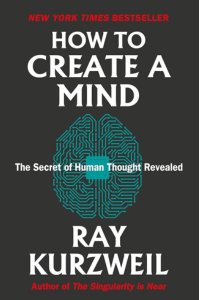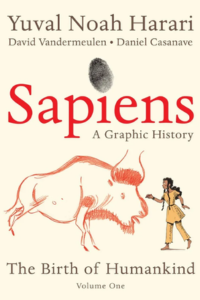Introduction to How to Create a Mind
In How to Create a Mind, Ray Kurzweil delves into the structure of the human brain to understand consciousness and thought processes. A visionary in artificial intelligence, Kurzweil believes that reverse-engineering the human brain will not only unlock the mysteries of consciousness but will also advance the development of AI. This book combines neuroscience, psychology, and futuristic ideas, making it ideal for anyone curious about the future of mind and machine.
Kurzweil’s Theory of the Pattern Recognition Process
At the heart of Kurzweil’s book is the Pattern Recognition Theory of Mind (PRTM), which suggests that the brain operates by recognizing and building patterns. Kurzweil explains that our minds store information in hierarchical patterns that allow us to process complex ideas and emotions. This theory, he argues, is pivotal to developing AI that can mimic human thinking.
Steps to Building Conscious Machines
Kurzweil proposes that creating conscious machines requires:
- Emulating Human Cognition: Building AI based on how humans process information can create a more natural intelligence.
- Reverse Engineering the Brain: By studying the brain’s biological processes, we can replicate them in computers.
- Integrating Emotional Intelligence: Kurzweil suggests that emotional responses and social intelligence are vital for AI to truly understand human behavior.
Future Implications of Mind Creation
Kurzweil discusses potential ethical and societal impacts of creating intelligent machines. He believes that, once developed, AI will significantly enhance human capabilities. However, he cautions about the ethical dilemmas that may arise, such as privacy concerns and the implications of machines that can surpass human intelligence. His insights point toward a future where humanity may need to adapt to the existence of equally intelligent, potentially self-aware machines.
Key Takeaways from How to Create a Mind
- Pattern Recognition Theory: Our brains process and interpret the world through patterns, a concept vital to developing true AI.
- Emotional and Social Intelligence: Human-like AI requires more than just logic; it needs emotional and social understanding.
- Ethical Challenges: The rise of intelligent machines will present ethical questions about autonomy, privacy, and human-AI relations.
Final Thoughts on How to Create a Mind
Ray Kurzweil’s How to Create a Mind offers an enlightening perspective on AI, suggesting that by understanding the human brain, we can design machines that think and feel similarly. His visionary ideas bridge neuroscience with computer science, inspiring readers to consider both the potential and responsibilities of advancing AI.





Reviews
There are no reviews yet.